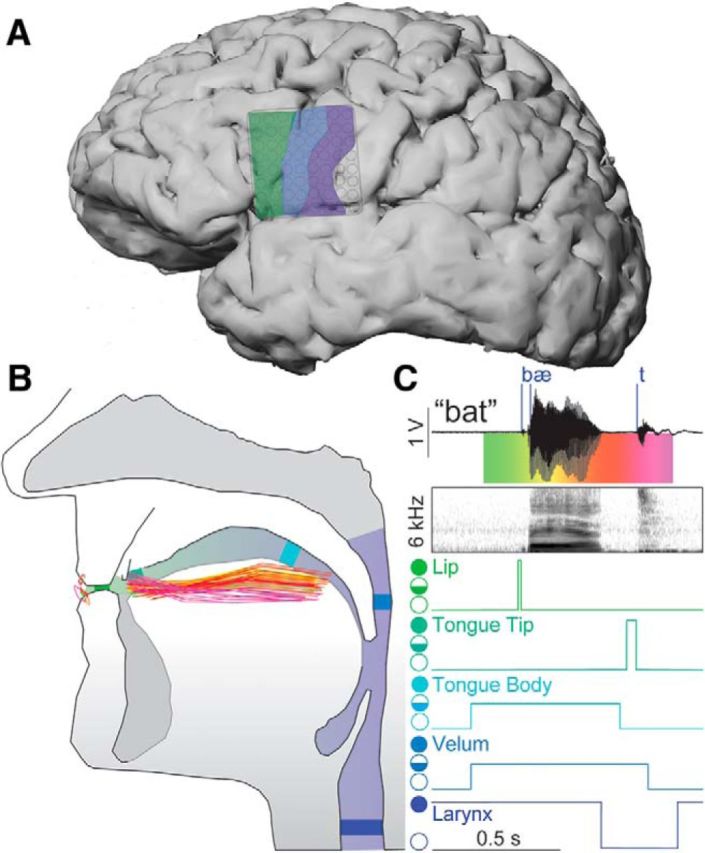Figure 1.

Defining phoneme and articulatory gesture onsets. A, Cerebral cortex of Subject 5 (S5) with recorded regions of speech motor cortex highlighted: IFG (green), aPCG (blue), and pPCG (purple). B, Vocal tract with positions of the lips, tongue body, and tongue tip during production of a single word. Each trace represents the position, at 10-ms intervals, generated by the AAI model, from word onset (green) to word offset (magenta; see corresponding colors in C). C, Example audio signal, and corresponding audio spectrogram, from S5 with labeled phonemic event onsets (blue vertical lines) mapped to vocal tract articulatory gesture positions. Target apertures for each articulatory gesture action are marked from open (open circle), to critical (half-filled circle), to closed (filled circle). Note that larynx has opposite open/close orientation as its default configuration is assumed to be near closure (vibrating; Browman and Goldstein, 1992). Also note that while the initial and final consonants are associated with a specific velum-closing action, the vowel does not specify such a gesture (thus, the state of the velum during the vowel depends on the surrounding gestures).
